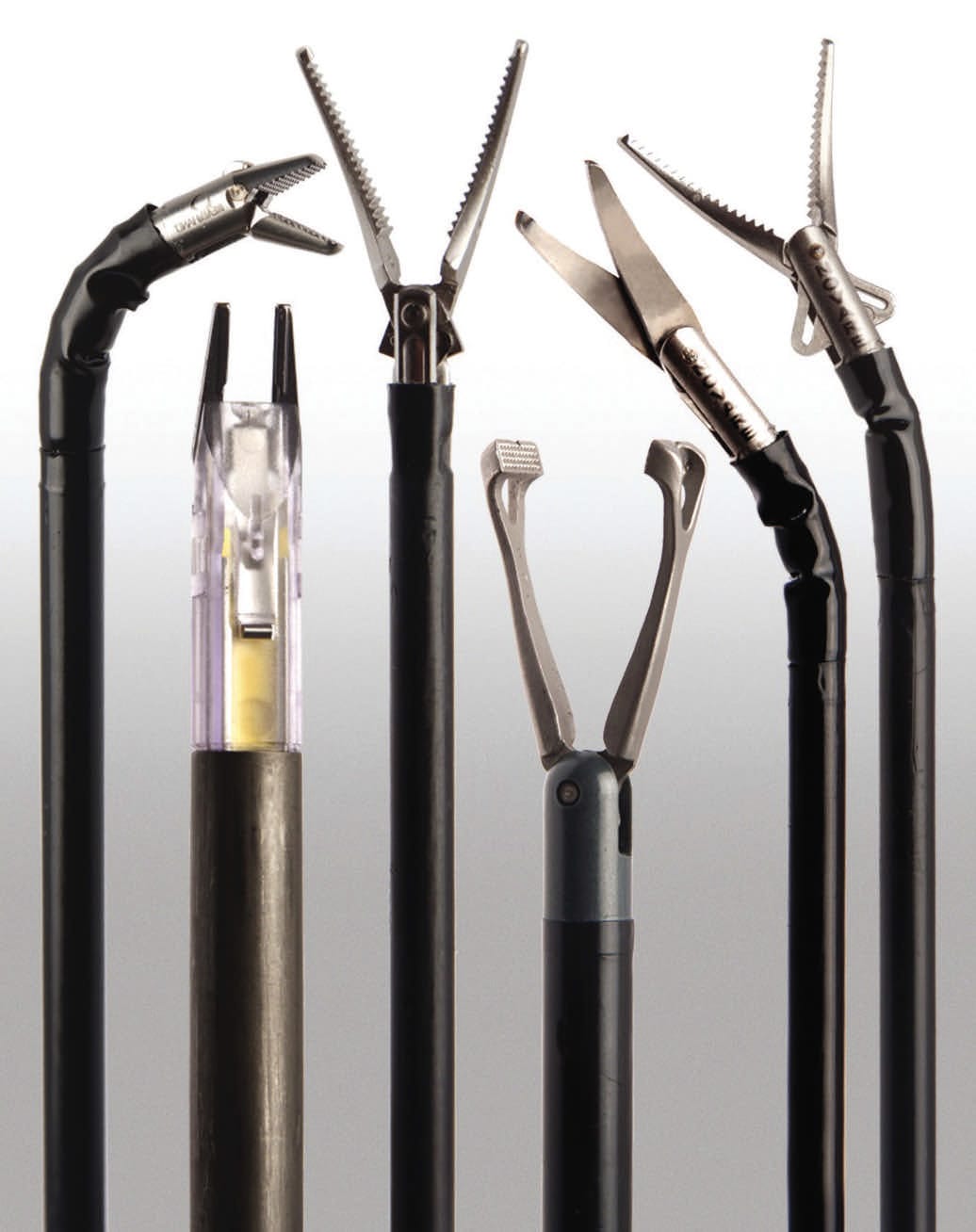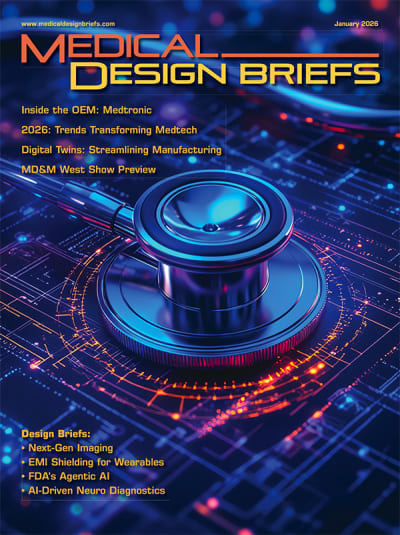The surgical instrument market today is dominated by products that offer multi-functionality as well as ease of use. The market has seen an increase in demand for a variety of increasingly complex and sophisticated surgical products and tools capable of performing multiple functions while also improving the user experience during procedures. Handheld surgical instruments need to be designed to allow surgeons to access hard-to-reach areas of the body with precise, seamless tip positional control, especially during minimally invasive surgery.
Single-use surgical instruments designed to be disposed or recycled following use offer many benefits over reusable products. Prepackaged, individually wrapped and pre-sterilized, single-use devices offer a convenient, off-the-shelf option for surgeons and other operating room staff. By contrast, reusable products can malfunction or wear down over time. Single-use instruments won’t chip, dent, rust, or become dull or damaged with repeated use. Single-use scissors and other cutting instruments are new and optimally sharp out of the package every time. In addition, instrumentation that allows surgeons to deliver care more efficiently and safely translates to faster recoveries and improved outcomes for patients.
One of the significant advantages of single-use instruments is that they do not require sterile processing, involving disinfecting, sterilization, reprocessing, and restocking best practices. These are costly, time-intensive operations for hospitals. Some healthcare facilities outsource sterile processing and maintenance to a third-party vendor, which is also a costly line item.
Even with rigorous protocols in place, thoroughly disinfecting, sterilizing, and removing biological debris and other microorganisms from reusable products can pose challenges. Some reusable surgical tools, such as articulating laparoscopic devices, have complex or elaborate parts that can be especially difficult to clean. If they are not disinfected and sterilized properly, pathogens can be introduced to patients, increasing risk of healthcare-associated infections (HAIs). Use of disposables reduces the risk of surgical patients being exposed to HAIs from reusable instruments that are reprocessed inadequately.
What OEMs Need to Know: Single-Use Instruments

Original equipment manufacturers (OEMs) want to provide high-quality single-use instrumentation options to their customers and want to know that robust disposables and components can be produced cost-efficiently with quick turnaround. Working with an experienced, full-service contract manufacturing organization (CMO) is often the key to optimal product design support and analysis for manufacturability. Choosing the right engineering company staffed by experienced, innovative design engineers can help OEMs realize their goals in a timely, cost-efficient manner.
A critical success factor is the CMO’s ability to design, produce, and maintain the dies and associated tooling that will be used to produce an OEM’s parts and products. Precision tooling for highspeed precision stamped, formed, and machined components can be achieved to support the requirements of a single-use instrument development program.
Design for Manufacturability
Establishing a design for manufacturability (DFM) process is a critical early step that aims to simplify and reduce the number of steps needed to manufacture a product. DFM considers cost, time, and other factors early in the design phase to ensure that a product is optimized for production. If done properly, DFM can help identify potential problems early on that could result in product failures or manufacturing inefficiencies downstream. Potential issues addressed early in the design phase will save time and money and minimize wasted resources.
The process should start with a financial analysis and cost breakdown for manufacturing and assembly, with a focus on internal components that have the potential to be produced with alternative manufacturing processes. At the same time, it is essential for a CMO to carefully assess the intended use of a product, relying on the OEM to explain what the functionality and goal of the project are for the end user. It is critical to understand the surgeon’s perspective and insights based on market research that the OEM has conducted. For single-use instruments, manufacturers need to understand the properties that are essential to the optimal functioning of a product. Consider such factors as:
Will the product need to articulate or stay rigid during procedures?
For articulating instruments, how often will the tube articulate and to what degree?
Is the component or device used for dissection, sealing, or wound closure?
Will the device be multi-function, performing different functions during procedures?
Will it be used for hot or cold cutting during surgery?
Understanding the functionality and project goal, along with any commercial, technical, and compliance factors, will enable OEMs and their CMO partners to identify a manufacturing solution that best meets the needs of the project and results in efficiency and quality. In addition, these factors will impact material selection, laser cut geometry, and whether any post-processing will be needed.
Prototyping and Validation
Prototyping and feasibility testing are used to test a functional product design, evaluate material, and refine design and production elements. Prototyping can help manufacturers scale up to mass production using the most efficient processes that also meet federal regulatory requirements. OEMs that fail to engage a CMO skilled at prototyping and controls risk having to go back and revisit a design if and when issues arise once production ramps up. Revisions of this nature can be costly and cause development and production delays.
Volume Considerations
DFM allows manufacturers to optimize designs to be produced at high volumes. The process provides the blueprint for ramping up with a validated, evidence-based development program that saves time and money downstream.
For higher volume projects, automated processes like stamping dies, machining, laser cutters and welders, vision systems, and injection molding can all be considered. A stamping press can produce several mission components in a week. Initial capital requirements of a stamping tool can be amortized over time. For volumes closer to a few thousand pieces a week, along with tolerances of ±0.0005 in., machining is a better choice. Articulation joints are well suited for laser cutting. The key is to identify the processes based on a program’s specific design needs.
Lower volume projects are better suited for less-automated technologies. Machining is more versatile and can accommodate volume needs that shift mid-project. Part geometry is another factor in process selection. Some part shapes are simply unable to be stamped due to the load required to pierce the materials required for thick diameters. Machining generally has greater accuracy with geometry and enables starting with a larger billet and adding material to create desired features. Part geometry can also dictate whether secondary processes will be needed.
Minimizing Progressive Tool Costs
Minimizing progressive tool development costs is an important component of the design process. It’s essential to design tool and safeties in order to prevent breakage and misfeeds, which can increase costs.
Stock lace-up point. Design the stock lace-up point so that it can be laced up without creating half slugs that could get stuck in the die and cause breakage.
Press stroke. Minimizing press stroke is often an overlooked simple fix. For example, running 200 strokes per minute with a 2-in. stroke equates to running a 1-in. stroke at 400 strokes per minute.
Slug controls. Factoring slug controls such as notches, vacuums, punch rooftops, and slug darts, into product design helps ensure a robust tool design.
Die features. Often die features can increase cost but making sound decisions in the tool is more cost-effective than being forced to address robustness and other die features after the tool is built. Consider increasing the die shoe to prevent flexing, using larger-diameter guide pins, or adding stations in the tool.
Tool support. Carefully assess the press bolster opening and whether it will support the tool. A tool flex of just a few thousandths of an inch can lead to a part variation. Sometimes a custom support plate under the die shoe can be an effective way to minimize tool development costs in this instance.
Sensors and stock support liners. Die designers should always include feed-to-die support liners and buckle sensors. At a minimum, consider a micron sensor to detect slug pulls or a misfeed sensor or buckle sensor for stock feeding issues. A loop sensor between the coil stock and press feed can also be engineered.
Progressive die design checklist. A checklist based on past pain points and lessons learned is a very effective way to minimize progressive tool development costs with each project. Following every build, problems that surfaced during development and effective solutions that were identified and implemented can help minimize issues with future projects. A checklist can be modified with every subsequent die build to increase effectiveness and improve development time in the design phase. CMOs that work smarter will be invaluable partners to their customers.
Conclusion
Demand for disposable surgical devices is growing and is here to stay. Pre-sterilized and individually packaged, they offer surgeons and healthcare facilities a high-performing off-the-shelf option that can mitigate risk of contamination and infection for patients and hospital staff. Working with a CMO partner experienced in prototyping to mass production, OEMs can deliver practical, high-quality, reliable solutions while keeping costs manageable and return on investment high for their customers.
This article was written by Thomas Vacca, Director of Engineering and Tooling at MICRO, Somerset, NJ. For more information, visit here .




